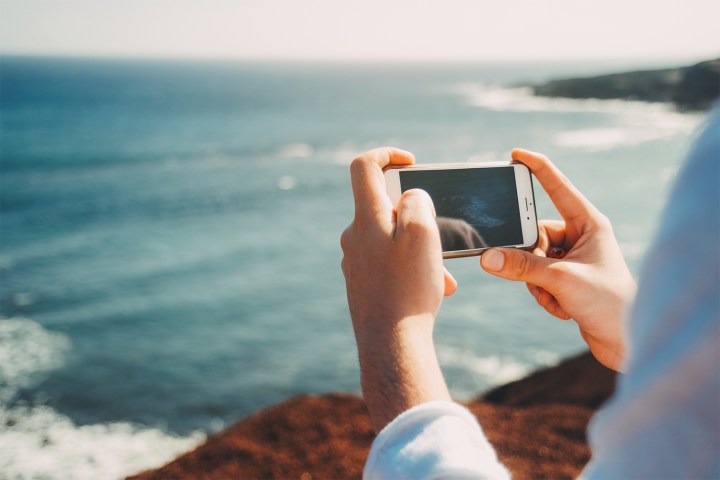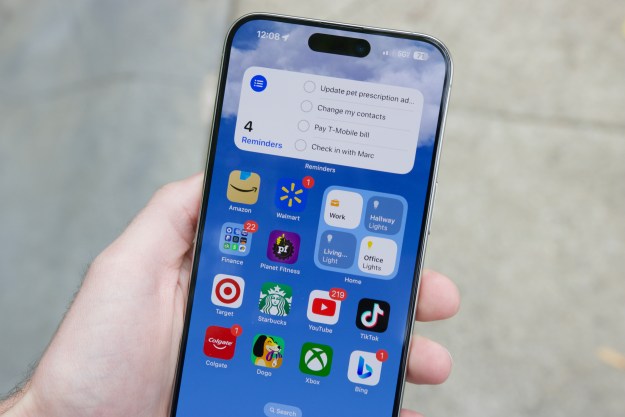
Smartphones traditionally snap the very familiar JPEG file that’s easily (and instantly) shareable. JPEGs are automatically edited and adjusted by the software built into the camera or smartphone so they’re ready to go. The downside is that JPEGs are heavily compressed. RAW file types, such as DNG, on the other hand, are untouched by that automatic software, leaving more of the photo’s data intact. The untouched RAW file, whether opened on a desktop program or a mobile photo editor, offers more flexibility in retouching than a JPEG that’s already been processed. As you might suspect, the tradeoff is that RAW files tend to be very large.
The iOS 10 update, slated for release on September 13, will allow users to swap between the traditional JPEG and a DNG RAW file in third-party apps (Apple’s native camera app, however, won’t shoot in RAW). Several Android cameras (largely high-end options released since Lollipop 5.0) offer the option of RAW shooting in the native app or through third-party apps. Since DNG files are larger than JPEGs, the user will have the option to turn the feature on and off.
“RAW photography means you don’t actually have to make all of the choices when you are taking a photograph.”
While DNG may sound complex, the original idea behind the untouched file type is actually the opposite. Thomas Knoll, Photoshop’s original co-creator who worked with Adobe to develop DNG in 2004, says that the goal of DNG is actually to make photography easier.
“[RAW photography] means you don’t actually have to make all of the choices when you are taking a photograph,” said Knoll, a self-proclaimed amateur photographer himself. “If you make a mistake on how you set up the camera, often, it’s trivial to fix when you are processing the RAW file afterward. I’ve always thought that RAW formats, compared to JPEG, make photography easier to do.”
With a JPEG, the camera automatically sets in information like the white balance and applies a sharpening algorithm. And while even a RAW file can’t recover from extreme exposure errors, the untouched file type is more forgiving, giving the photographer more control, by allowing the parameters that the computer automatically sets for a JPEG to be adjusted manually in a number of different desktop and mobile applications. White balance errors are particularly easy to adjust, while RAW files also allow for fine-tuning the exposure by enhancing the darks and lights of the image separately.
- 1. Unedited RAW From a Nexus 6P, by Colby Brown.
- 2. Edited RAW From a Nexus 6P, by Colby Brown.
DNG support also allows mobile photographers to edit RAW files while on the go. In the past, working photographers would need to either download and edit the files on a desktop later, or carry a laptop with them. With RAW support in Adobe Lightroom Mobile running on powerful tablet like the iPad Pro, a photographer could edit photos remotely without carrying a laptop, or waiting until he or she gets back to a studio. And when using Adobe’s Creative Sync platform, any changes made to a photo are reflected across devices.
“RAW means you don’t actually have to make all of the choices when you are taking a photograph.”
There are a few downsides to working with RAW, like the larger file sizes that can slow down the camera. RAW files also have to be edited and saved as a JPEG before sharing online. But the editing flexibility is often considered worth the extra hassle, especially for images that be later edited anyway.
So if RAW photography is more forgiving, why did RAW build a reputation as a complex process? Part of that stems from accessibility issues, Knoll said. Different brands have different types of RAW files – Nikon users will see a NEF after the file name, for example, while Canon shooters will see a CR2. When new cameras are released, sometimes the manufacturer adjusts just how those files are processed, which means those new files are no longer accessible by programs older than the camera.
The compatibility issue was a big complaint among consumers – and one that Knoll himself had when he purchased a camera with a RAW format that Photoshop didn’t yet support in 2002. That’s when Knoll decided to work on developing Adobe Camera RAW, a software that takes different RAW file types and converts them into a universal format so that they can still be opened in older versions of the software. That’s when DNG was born.
- 1. Unedited RAW photo from a Nexus 6P, by Colby Brown.
- 2. Edited RAW photo from a Nexus 6P, by Colby Brown.
DNG is a standard RAW file that’s universally accessible. Unlike brand-specific RAW formats, DNG is publicly documented so manufacturers and software engineers can utilize the format. That allowed camera manufacturers like Leica – and now Android and Apple – to easily incorporate RAW capability.
Some brands may use different compression methods to create a smaller file or handle the data in slightly different ways, but on an image quality level, Knoll explained, there isn’t a difference between NEF, CR2, and DNG. When a new camera is released, Knoll and the team at Adobe works to break down the file type into data about the camera’s physical characteristics and the image’s metadata, then add the conversion into Adobe Camera RAW. The RAW converter acts as a go-between to solve compatibility issues between different RAW types and software, often with programs that haven’t yet been updated to include the new camera model.
While many brands still choose to use their own RAW format, DNG provides a standard benchmark and allows users of new cameras to convert their files for use in older software programs. Different brands may use different compression methods in their files, but as an Adobe-developed file type, DNG’s structure includes Fast Load Preview data that allows for faster editing inside Lightroom and Adobe Camera RAW. The DNG format is also considered safer for archival photographs – as a standard, it’s likely that software programs 20 years down the road will still be able to access those files.
The basic structure behind a DNG file has remained largely unchanged since its introduction in 2004, although advances now allow for working with high dynamic range and panorama stitching.
DNG’s universal use is the main reason why smartphone manufacturers are choosing to use that format, Knoll said. If Google and Apple had decided to develop their own RAW format, app developers would need to release an update for every new

“The whole vision of DNG was to avoid the Tower of Babel issue where every new camera that comes out requires a change in the format and a new software update on every reader of that format,” Knoll said. “As the number of cameras increase and the number of software applications that process RAW format increase, it becomes a geometric explosion, whereas if you have a standard format, both programs can be used literally without any complexity problems.”
Smartphone photography’s move into RAW could open up more possibilities for why the medium exploded in the first place. While smartphones made photo editing quick, DNG now also makes editing apps more capable. And while smartphones have made photography simpler and more accessible, Knoll said that access to the untouched data through RAW makes correcting some novice mistakes possible in ways that JPEGs couldn’t achieve.
“[The availability of DNG] will improve the ease of use for smartphone camera technology in producing quality results,” Knoll said.
Editors' Recommendations
- Here’s how Apple could change your iPhone forever
- I’ve had the iPhone 15 Pro for six months. Here’s why it’s still amazing
- Your iPhone just got a new iOS update, and you should download it right now
- How to save text messages on iPhone and Android
- iOS 18 may be a giant iPhone update. Here are 6 things it needs








